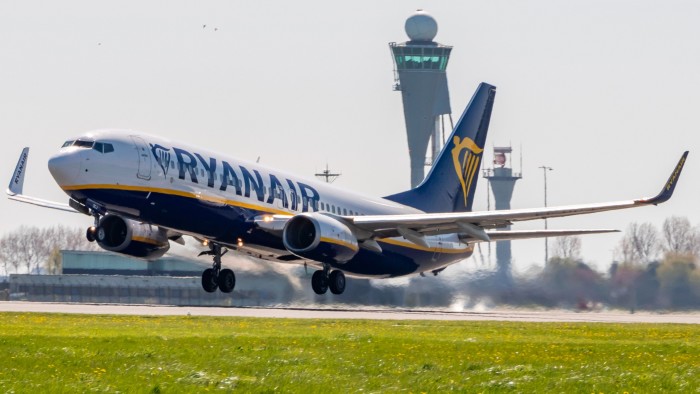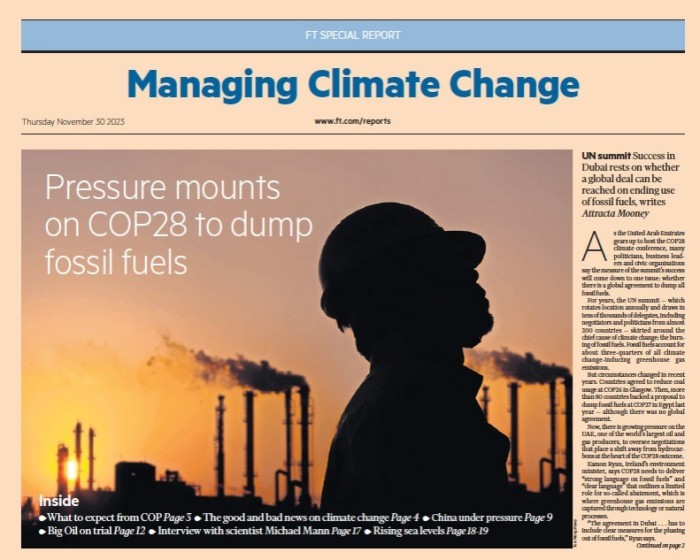European airlines look to flight path reform to help cut emissions

Simply sign up to the Airlines myFT Digest -- delivered directly to your inbox.
Airlines face their biggest challenge since the invention of the jet engine: how to decarbonise an industry built on the power of fossil fuels.
The aviation sector is one of the hardest in the world to clean up. The industry is responsible for about 2 per cent of global carbon dioxide emissions, according to the International Energy Agency, but its proportion of emissions is set to increase as airlines push forward with growth plans and other sectors decarbonise more rapidly.
Airlines have, nonetheless, committed to reaching net zero by 2050 using new fuels and technologies. But this ambitious pledge relies on significant scientific breakthroughs in the coming decades, from how to turn waste products and other non-fossil fuel materials into cost-effective cleaner fuels, to safely powering an aircraft using hydrogen or electricity.
Virgin Atlantic’s first transatlantic flight fully powered by so-called sustainable aviation fuel — biofuel or synthetic fuel — took off this week. The industry believes using cleaner fuel could cut net emissions by 70 per cent.

This article is part of an FT special report on Managing Climate Change
Many environmental groups and scientists are sceptical, though — particularly about whether these alternative fuel sources are truly sustainable amid worries over changes in land use to grow crops for biofuels. However, alongside planning for a clean fuel revolution, airline executives in Europe are also stepping up lobbying for the greater adoption of an emission reduction already within their grasp: reforming the flight paths that aircraft follow through the skies. “We have to look at . . . how to improve how we fly,” says Adina Vălean, EU Transport Commissioner.
The Single European Sky (SES) — first proposed by the European Commission in 2004 and amended in 2020 — is a programme to reform the organisation of fragmented airspace in the region that could lead to drastic emissions savings. Yet it has never been fully implemented.
Airlines rarely fly the most efficient paths between two airports, instead building flight routes to take into account airspace congestion and restrictions as they snake through separate blocks of airspace overseen by national air traffic controllers.
Implementing the SES would allow aircraft to carve the most optimal routes through the skies, saving time and fuel. Planes could fly more consistently at higher altitudes, burning less fuel, and descend more efficiently and smoothly to land, according to an EU report.
The sector believes it could cut emissions in Europe by up to 10 per cent overnight if the reforms were fully implemented — the equivalent of 11.6 megatonnes of carbon per year.
“There is overwhelming agreement that reform to Europe’s fragmented airspace and change-resistant air traffic management system will have an immediate impact in terms of fuel burn and thus emissions,” says Andrew Charlton, managing director of Aviation Advocacy, a consultancy.
But the apparently simple reforms have stalled spectacularly. European airline bosses complain there has been almost no progress from EU member states in implementing the initiative in the nearly two decades since it emerged.
Reform has been slow as countries remain hesitant over giving up control of their airspace, and protective of their national air navigation service providers, which are typically state owned and operated.
“There has been a real reluctance to move on it . . . there is a fear at member state level of relinquishing control,” says one industry executive. Unions in some countries are also powerful: there had been 65 days of strikes at French air traffic control by mid-November, according to calculations by airline Ryanair.
“There is a feeling that state-owned air navigation service providers need protecting; that, without them, somehow national sovereignty will be at risk,” Charlton says.
The International Air Transport Association earlier this year said the SES amounted to a “political failure”. And Ourania Georgoutsakou, managing director of Airlines for Europe, a lobbying group, sees it as a missed opportunity to “have a real impact on the carbon emissions of flying in Europe”. Regulators in Brussels agree. “We need member states to move on the common agreement of the SES,” Vălean says.
Airlines dismiss the air navigation service providers as “monopolies” that overcharge for their services anyway, and have stepped up their lobbying for reform — not only for the emissions savings, but also to cut fuel bills — one of the industry’s biggest costs.
But the SES has been stalled for so long that many bosses acknowledge they sound like broken records. Even so, some hope that the urgency of tackling climate change, and the difficulties in decarbonising the industry more thoroughly, could yet focus minds.
“EU and member states have talked the talk for decades. We know they can implement ambitious regulation when they put their minds to it . . . Now is the time for governments to walk the walk on the SES to ensure it can finally take off and unlock more efficient flying today,” says Georgoutsakou.

Comments